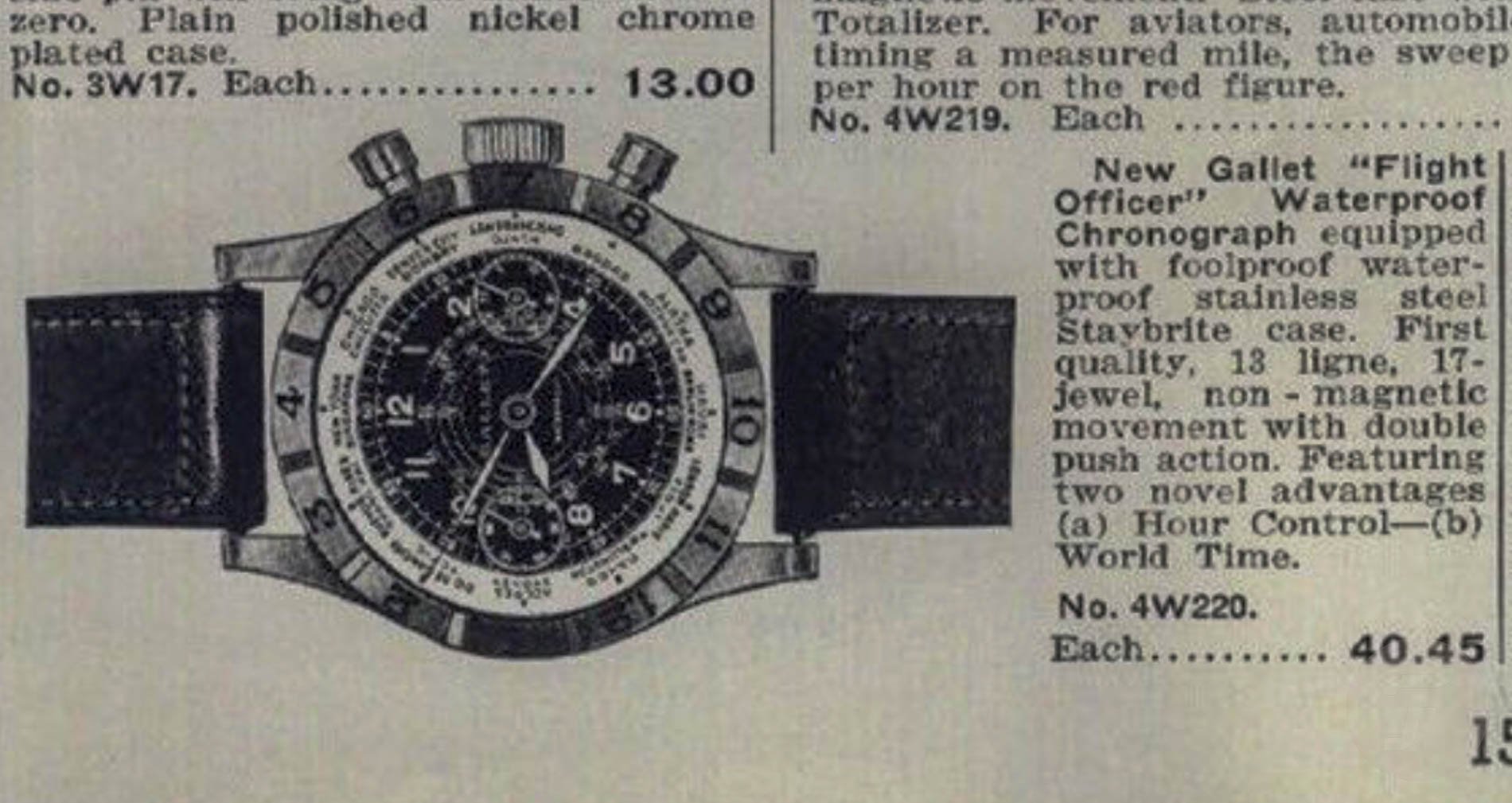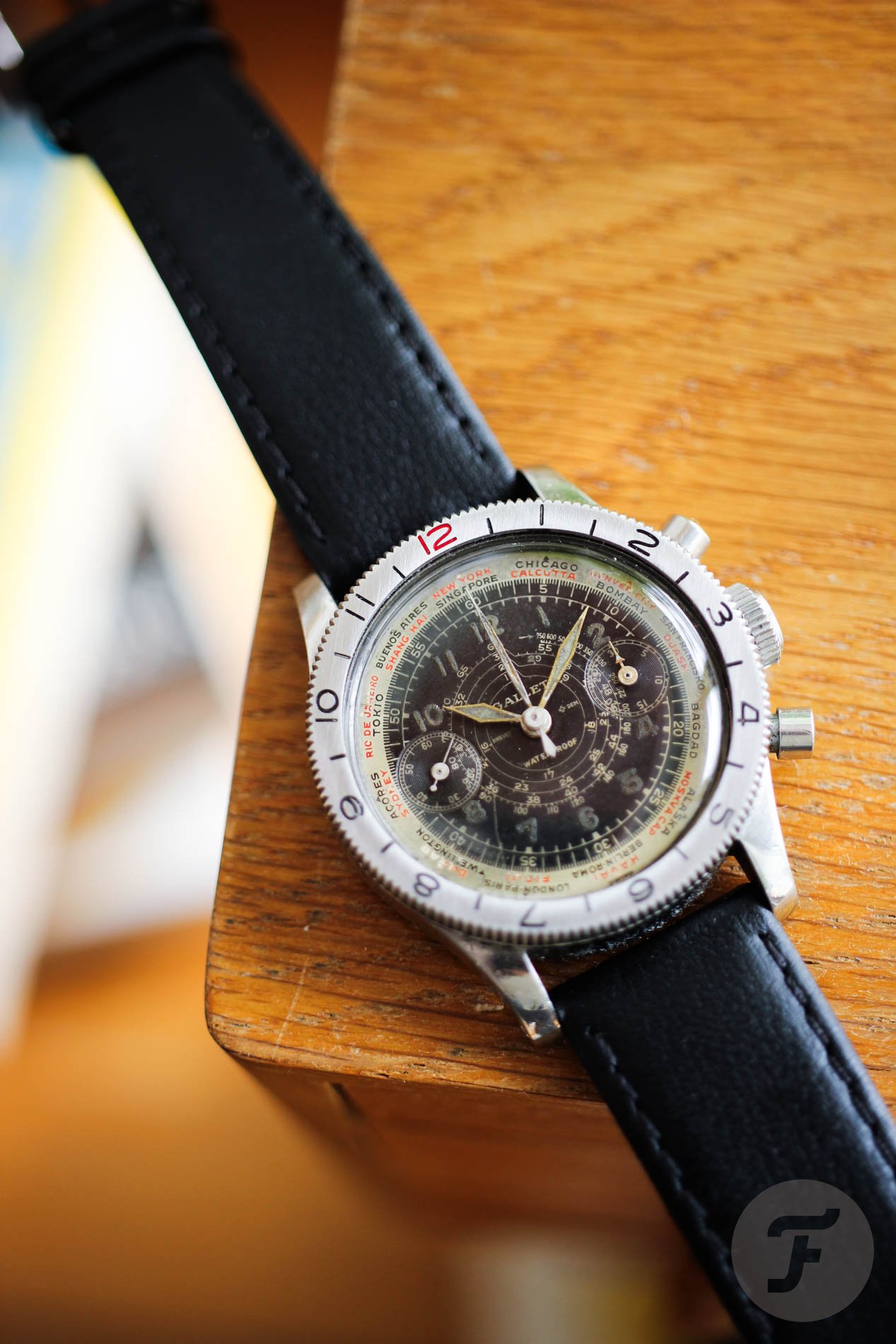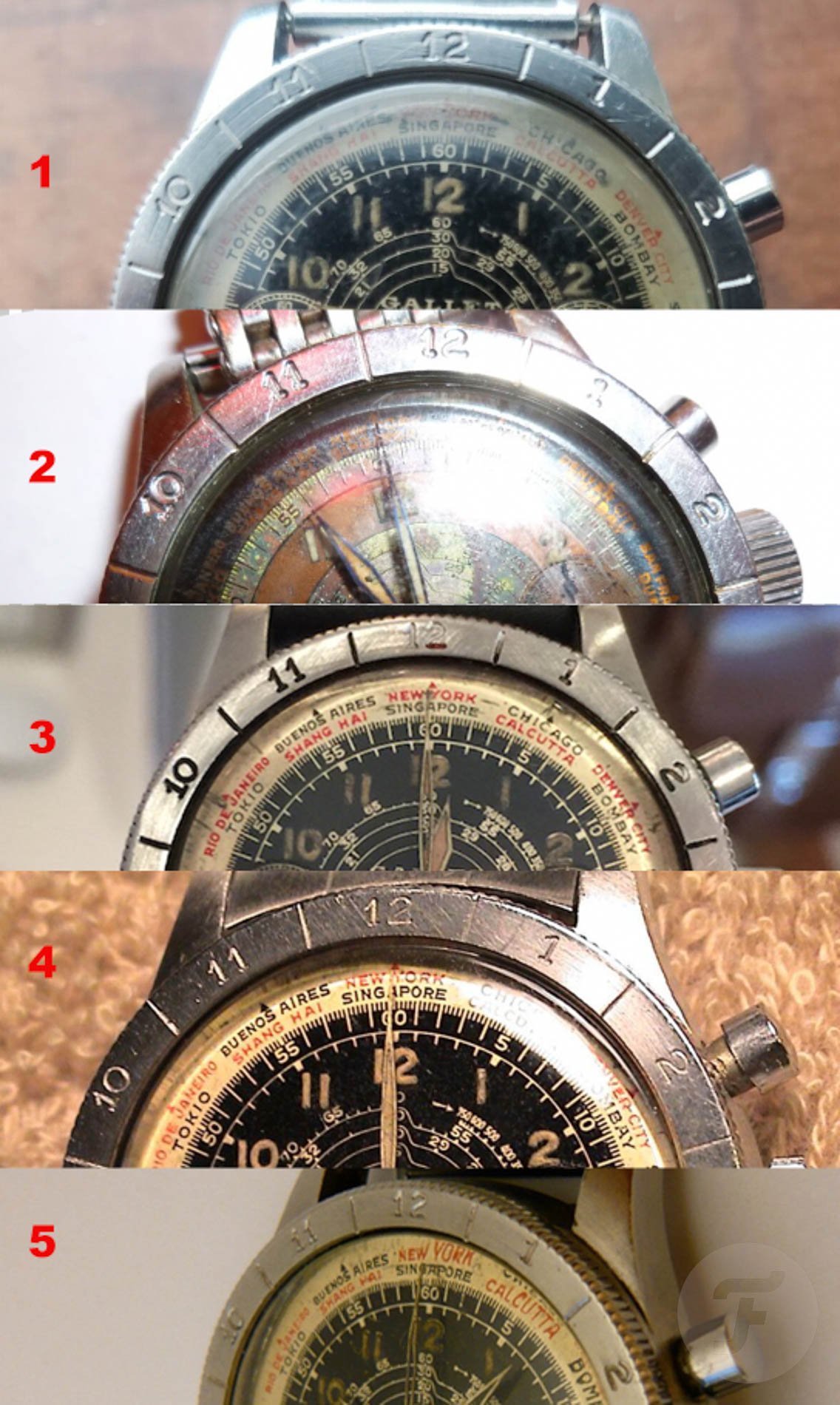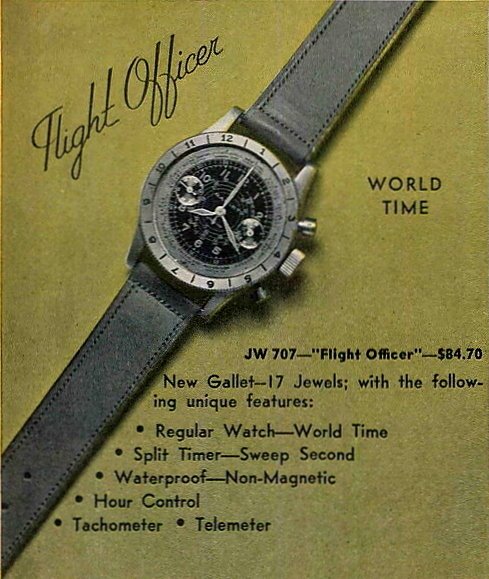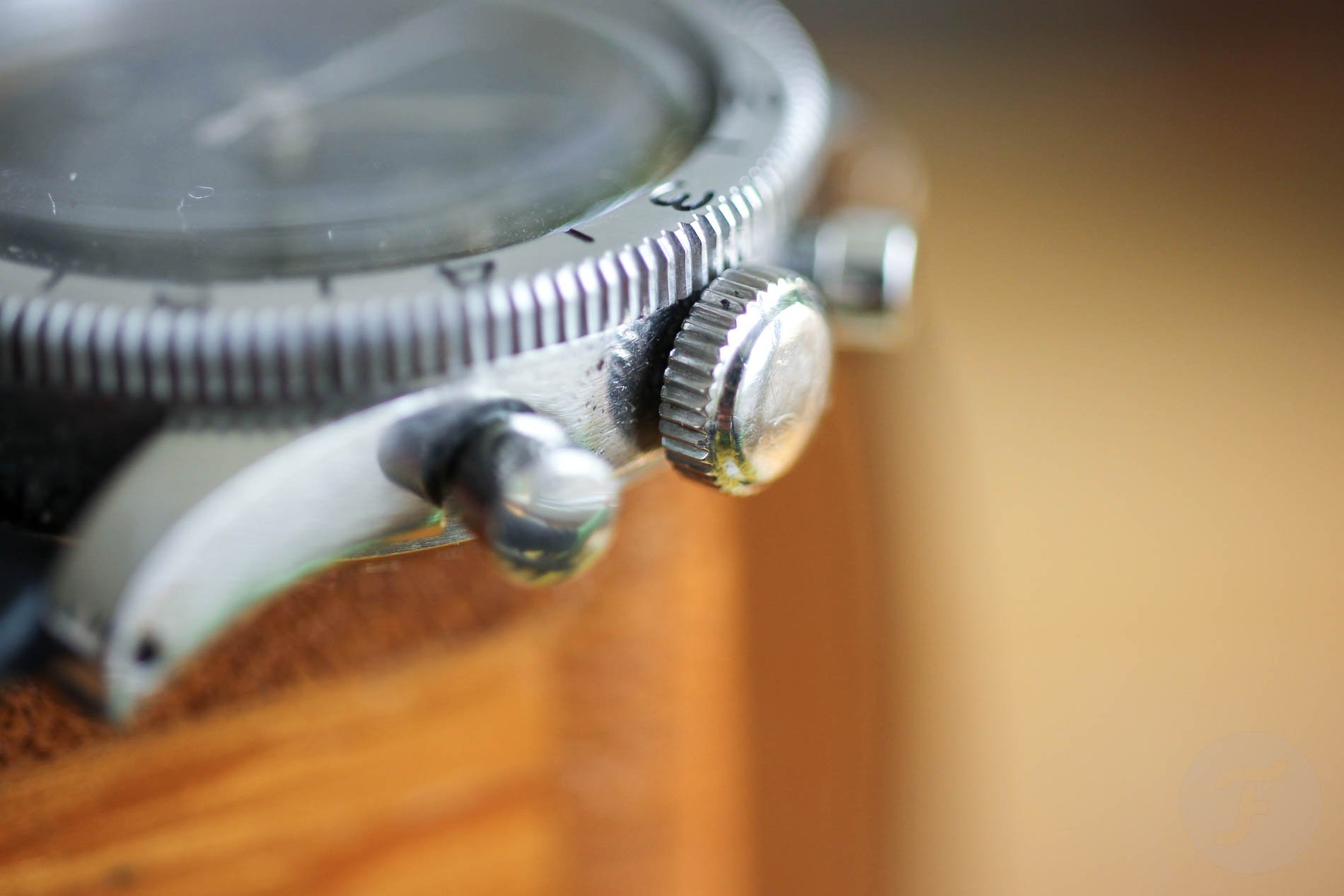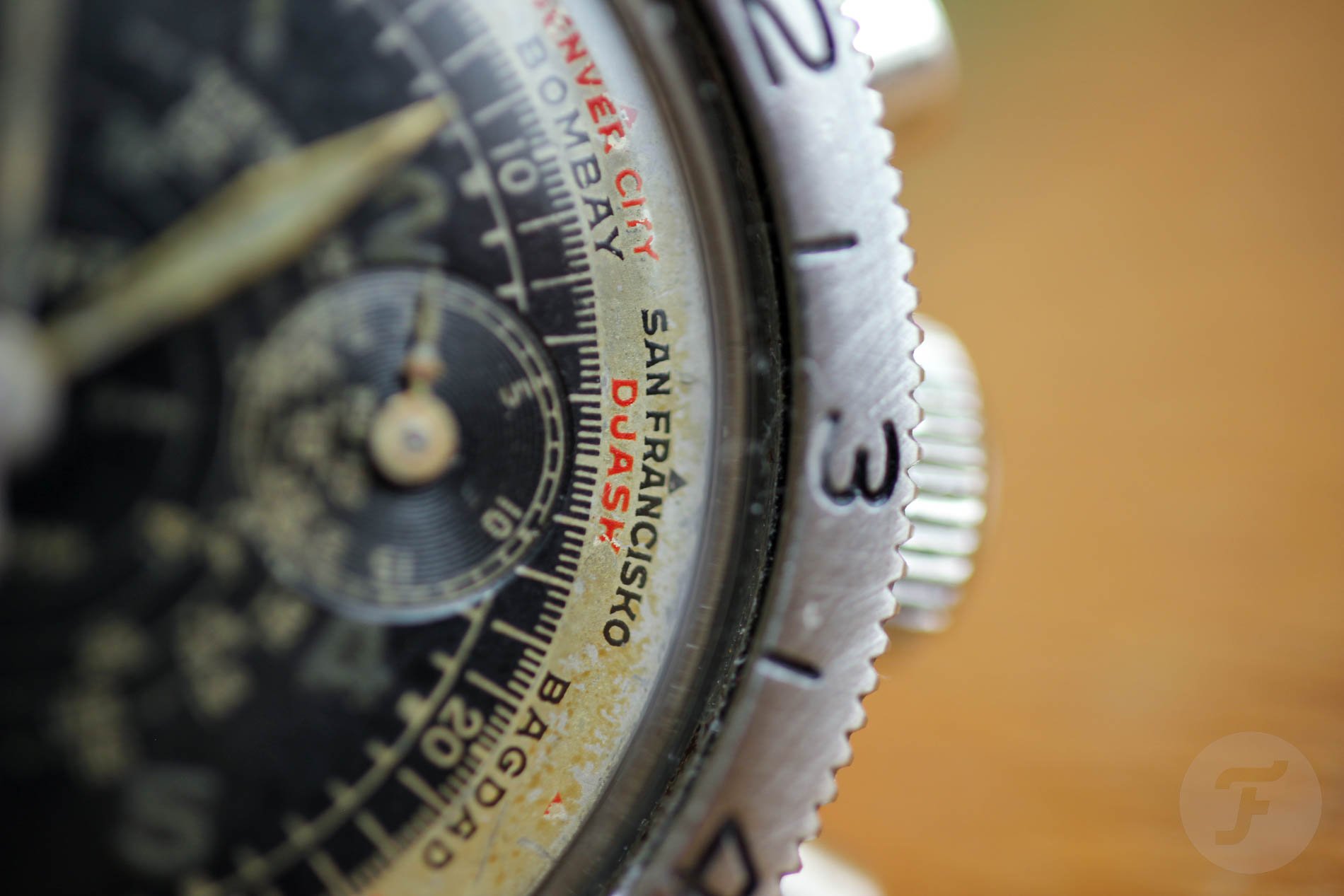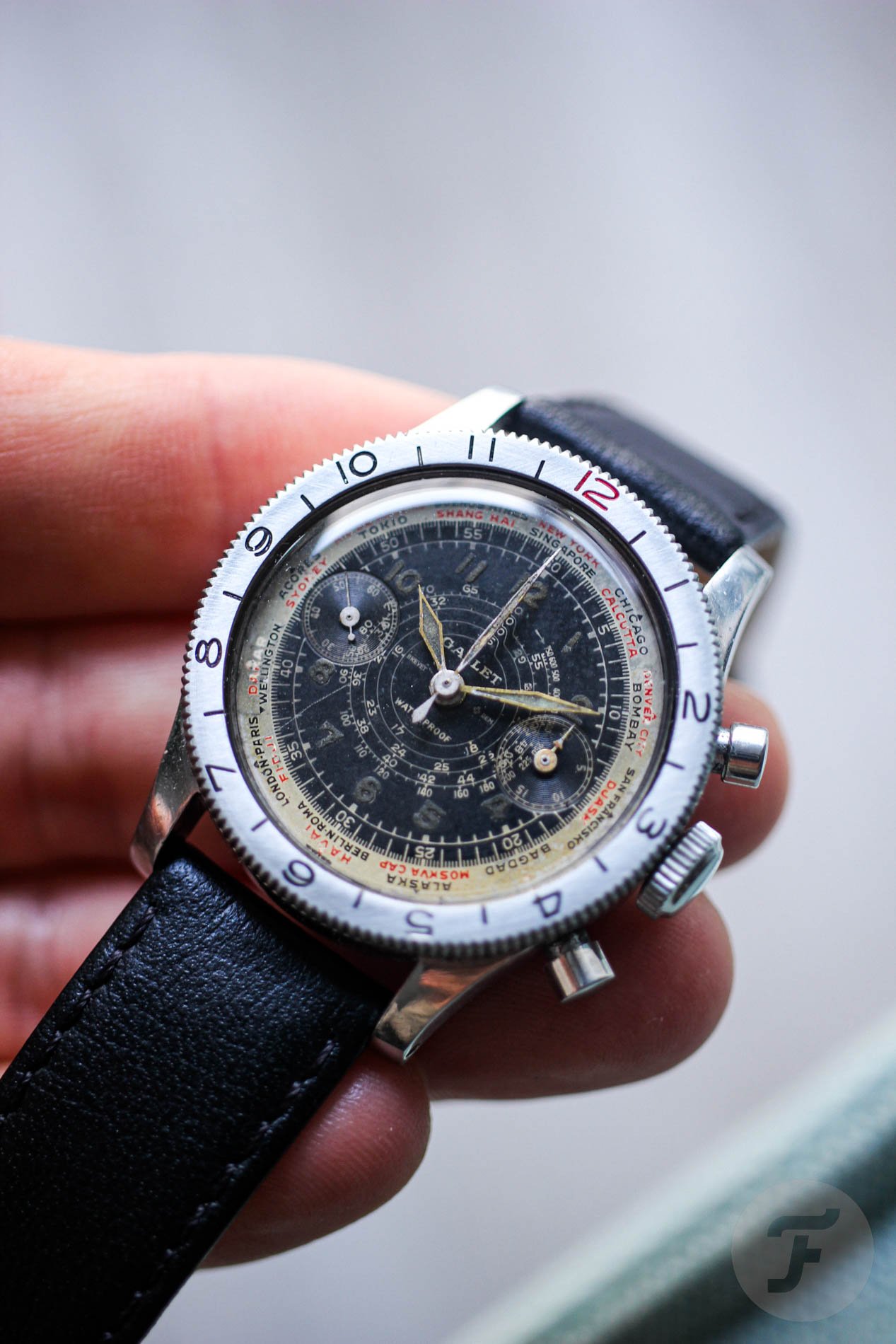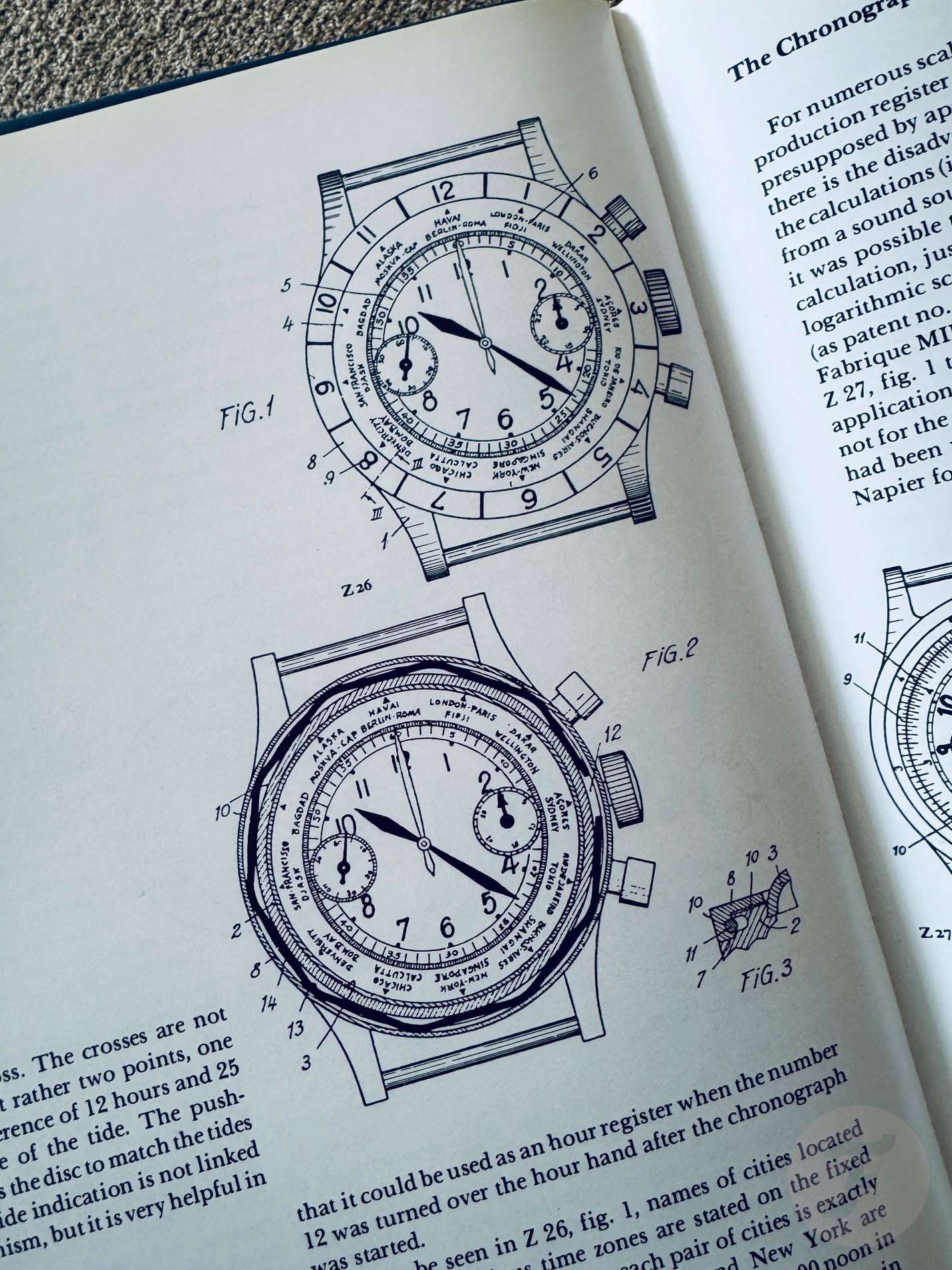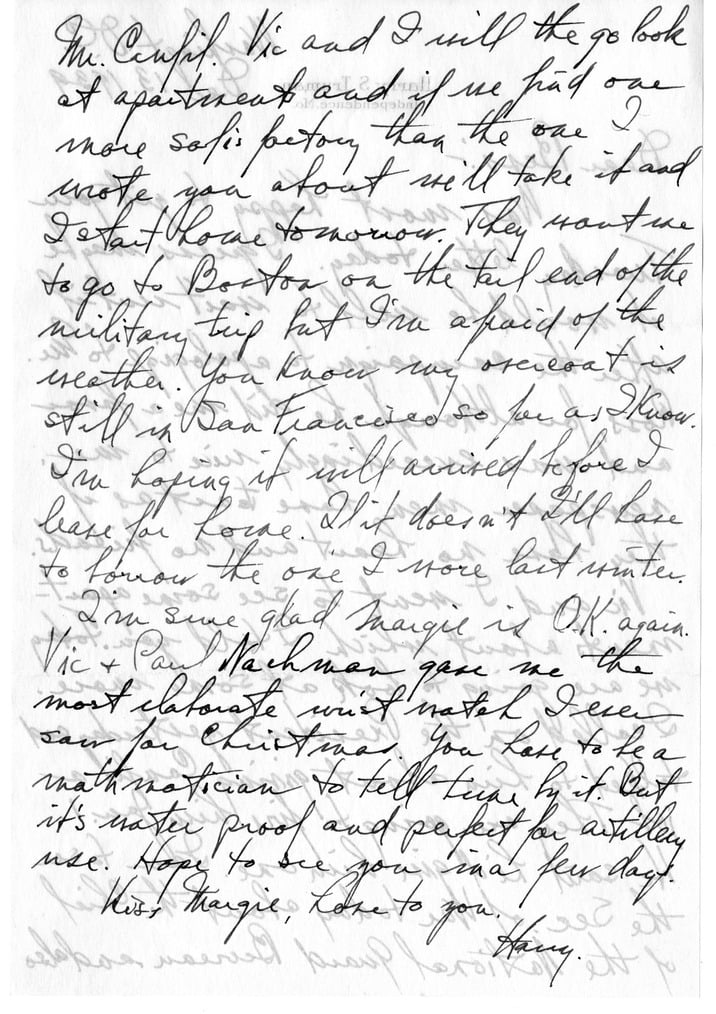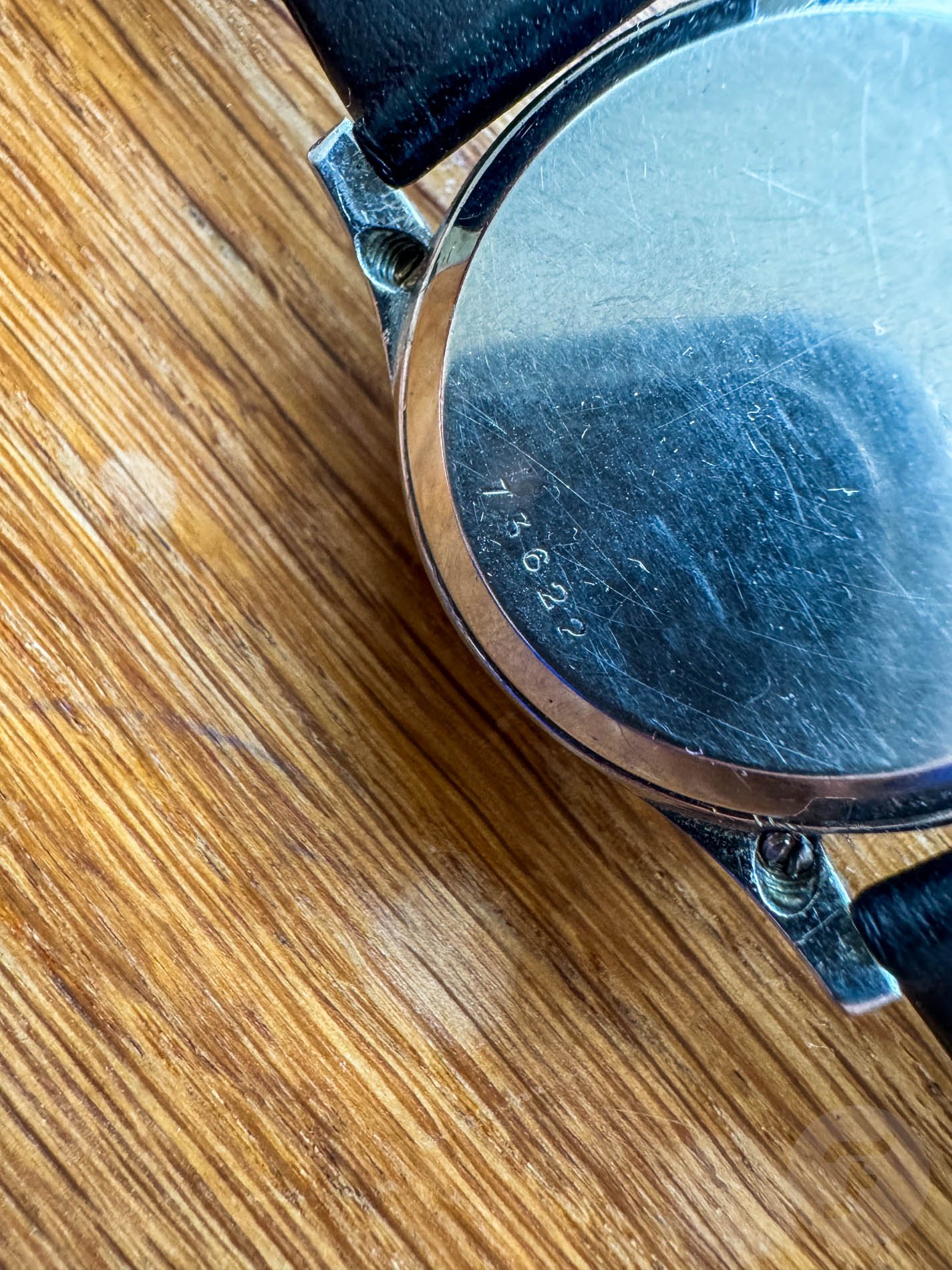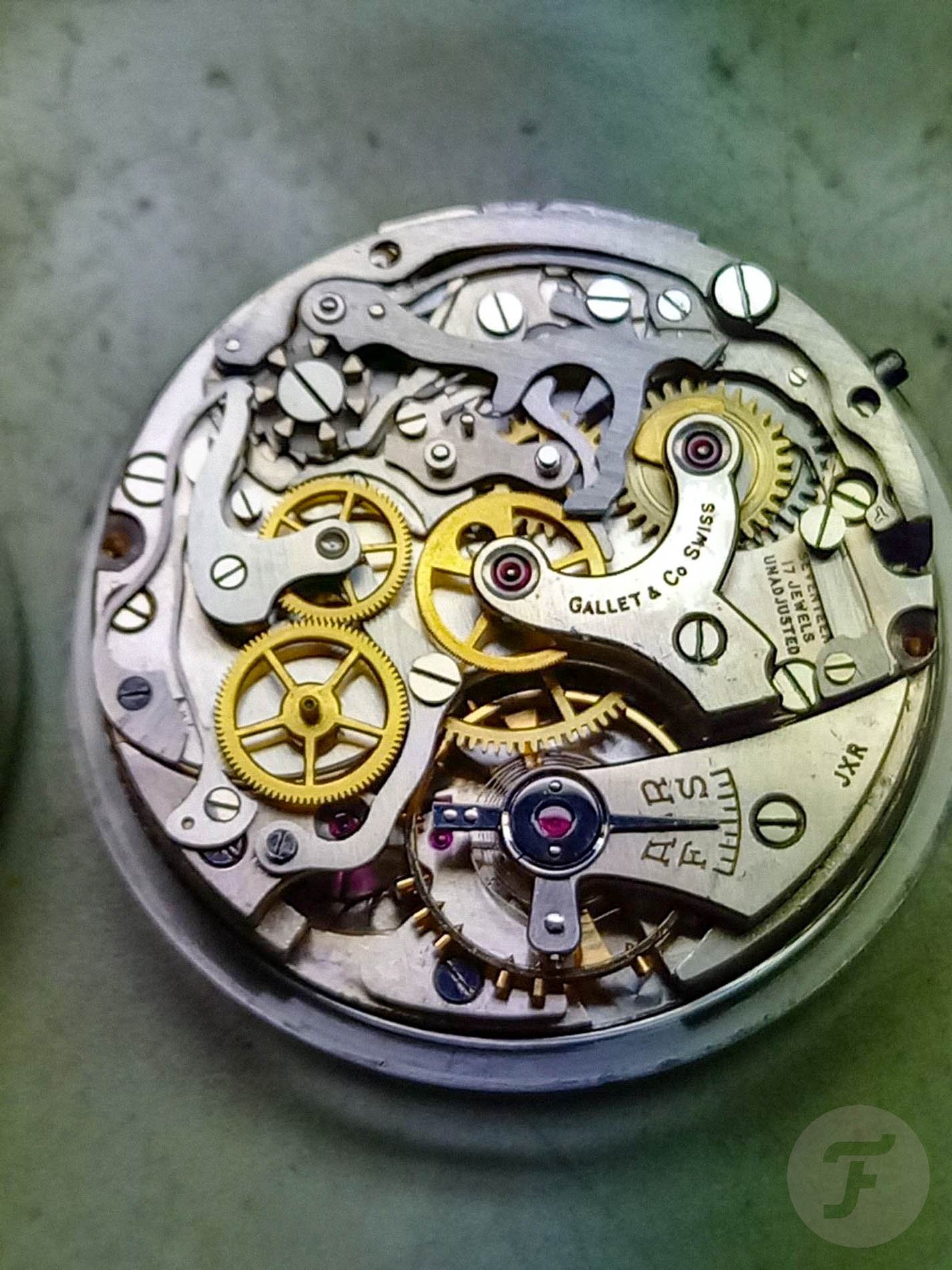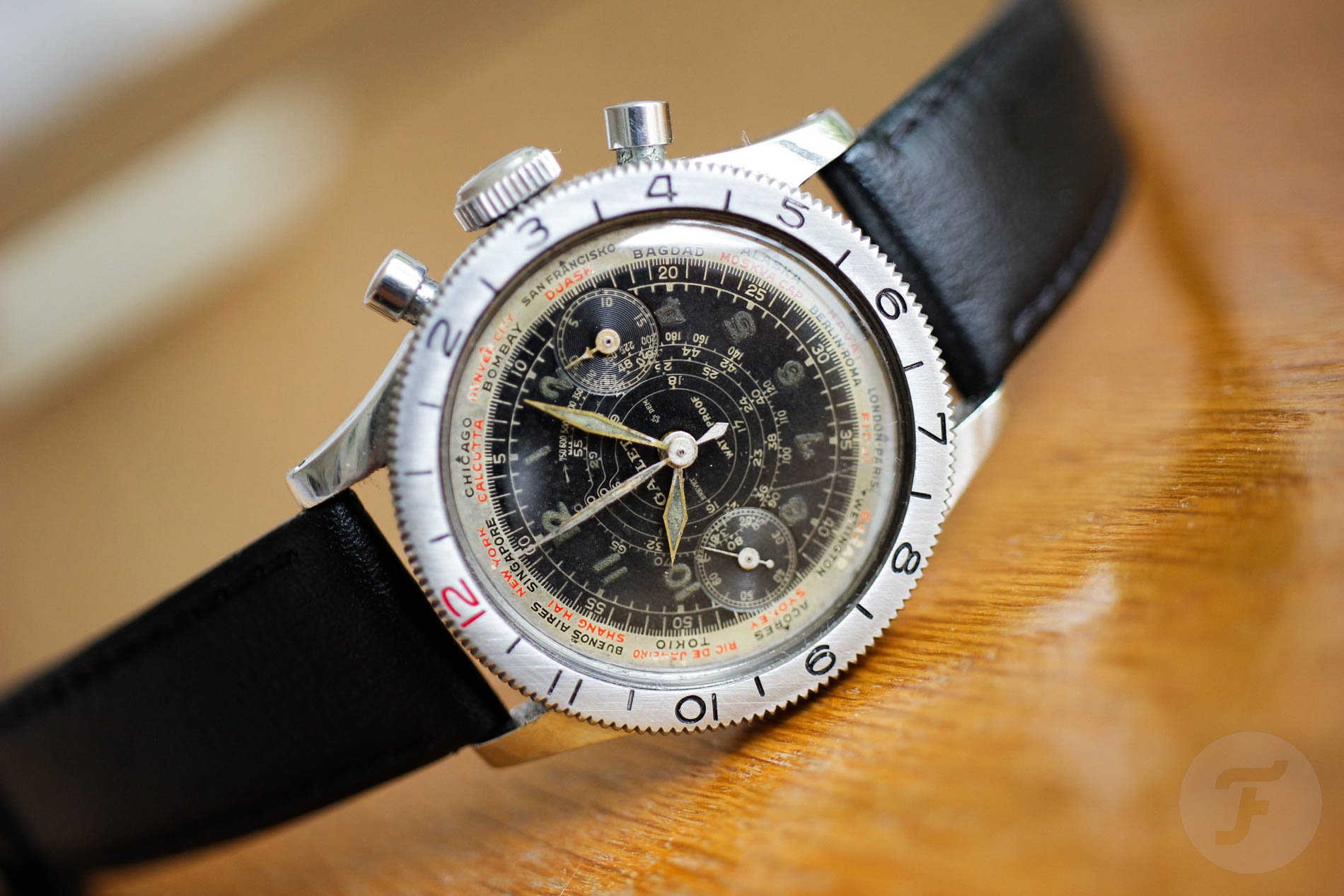Retrospective: Tomas Looks At The Early Flying Officer “Truman” — The Most Iconic Gallet Watch Ever Produced
If there is any Gallet watch that almost certainly sells for more than $10,000, it’s an early version of the Flying Officer with a black dial. Although it is a very expensive watch, proper research and documentation are limited. The details raise multiple questions.
Let’s start with the basics. The Flying Officer, the most important watch in Gallet’s history, utilized previous unique experiments with rotating bezels by other brands in a new and completely innovative way. Produced in 1938 and first advertised in January 1939, the Gallet Flying Officer featured names of world cities, representing time zones, around the edge of the dial on a contrasting white ring. A thin bezel with hour markings allowed the owner to track times across these zones simultaneously. The fact that this simple and then-unprecedented innovation is still in use on modern watches in a more or less unchanged form confirms its importance.
Flight Officer vs. Flying Officer
First stop, the name. You may not know this, but in the early years, the watch’s name was Flight Officer, not Flying Officer. In my archive, I have two printed materials showing a black-dial version of the watch, both introducing it as the “New Gallet Flight Officer.” Other printed materials with a later white-dial version label the watch as the Flying Officer. Late Gallet Flying Officer watches with Landeron movements lost the tachymetric scale but got the updated name printed on the dial.
A sensitive bezel-mounting system
In the late 1930s, rotating bezels were still a novelty. The technology was new, not thoroughly tested, and premature by today’s standards. The truth is that bezels fell off Gallet Flying Officers easily. If you want a complete and mission-tested Flying Officer from a WWII pilot, it’s very unlikely you will find one. The slightest bump into the case side, and the bezel would come off. That’s why many Flight Officers available for sale come “naked” without bezels.
Naked Officer
My Flying Officer, which you see in these pictures, also came stripped of its bezel. I tried hard to get any background information, but since the watch came through multiple middlemen, I didn’t have much luck. The guy I bought it from got the watch from Rick Kosek, who collects WWII items. Since he is not a watch person, he passed it on. “He bought it from a military picker in upstate New York. He will check with the family to see if there are any other belongings of the original owner,” was the only lead I got. I’m still chasing the people involved to get some information. My watch probably belonged to a WWII pilot or soldier, but I am afraid I won’t learn more details.
Bezel mystery
I believe the bezel I fitted to my watch is not correct. When the opportunity came to buy a later bezel from a 1950s white-dial Flying Officer thanks to Jack Wong, I didn’t hesitate. These are unobtanium, and it’s still better than no bezel. So, what’s the correct bezel for an early Flying Officer?
The first-gen Flying Officer bezel
The numbers on it are smaller, thicker, and curlier. I must say I love that style. I have seen it in the flesh just once, and it’s the real deal. A change of style is understandable. This is just speculation, but I dare say Gallet changed it to achieve better legibility.

Vintage ad for the Gallet Flying Officer (ca. 1950) showing the model name and updated version of the bezel
Whether we like it or not, I don’t think the bezel mounted on my watch would have come with one of that age. When I searched my archive, I found too many first-gen bezels fitted on the early black-dial Flying Officer. I was unsure only until I found a green brochure showing it clearly. To this day, I’ve found no better proof. But if we stick to the clear picture above and the fact that too many early Flight Officers got bezels like this, it would be wrong to call them fake. Yes, even seasoned collectors considered them an imperfect reproduction. But here we are; the bezel style seems original, just from later years.
The 1941 bezel
To make things more complicated, we need to go back to the 1941 catalog shot at the beginning of this article. I’ve never seen the pictured bezel style on any Flight Officer. Neither has Pedro Matas, my fellow Gallet-obsessed enthusiast. Was that just a prototype bezel or a bad drawing? This is another mystery that remains unexplained for now.
The crown
When I think of the Flying Officer, I see a very individualistic “Clamshell” crown, which is quite big but pretty sleek thanks to its flat-hat profile. This style is visible in later catalogs and ads promoting white-dial versions of the Flying Officer. Finding a Gallet Flying Officer crown with the correct flat-hat crown is another needle-in-a-haystack task. Looking closer at early Flying Officers ads, you will notice they have chunky crowns without flat-hat profiles.
Puzzling “Djask”
Displaying “London” at 7 o’clock and “New York” in the ruling position at 12 makes it clear what market the watch was designed for. If you start reading the other city names, you might discover unusual ones, including Bagdad, Dakar, or Djask. Why are they there, and where exactly is the last one?
In the early days of intercontinental travel, crossing the world wasn’t a single flight — it was a journey through a chain of outposts. Like Dakar for transatlantic flights or the Azores for Pan Am’s crossings, Djask was an indispensable stepping stone that made global aviation possible.
Djask, better known as Jask, is a small town on the Gulf of Oman in Persia (modern-day Iran), sat along the air corridors linking Europe to South and Southeast Asia. It was an essential stopover for airlines like KLM and Imperial Airways, the predecessor of British Airways on flights toward India, Thailand, Singapore, Indonesia, and Australia.
Aircraft of that era had limited range and required frequent refueling. Jask provided a crucial midpoint between the Middle East and India, allowing flights to continue toward major cities, like Karachi, Calcutta, and beyond. Since early flights often required overnight stays, Jask also functioned as a rest stop for passengers and crew members.
Jask remained in use as a refueling point well into the late 1960s when the rise of Dubai as a major aviation hub rendered it obsolete. The development of longer-range aircraft also reduced the need for multiple stopovers.
Patent
“Djask” was on the dial from the beginning. The original patent documentation tied to Philippe Weiss confirms this. Weiss proved his creative and innovative spirit shortly after joining the family business. In 1926, he invented a screw-down crown, which Hans Wilsdorf of Rolex bought and later improved.
By the time Weiss applied to patent an innovative watch design incorporating a rotating bezel to display world time, Gallet was already marketing and selling Flying Officers in the United States. Comparing real Flying Officers to the patent documentation suggests that Gallet’s US management “rotated” the city ring to display the name of New York at the top. Swiss patent CH215450 was granted to Philippe Weiss on June 30th, 1941. We have no conclusive proof, but we assume that Weiss’s company was manufacturing Flying Officers under an exclusive contract for Gallet.
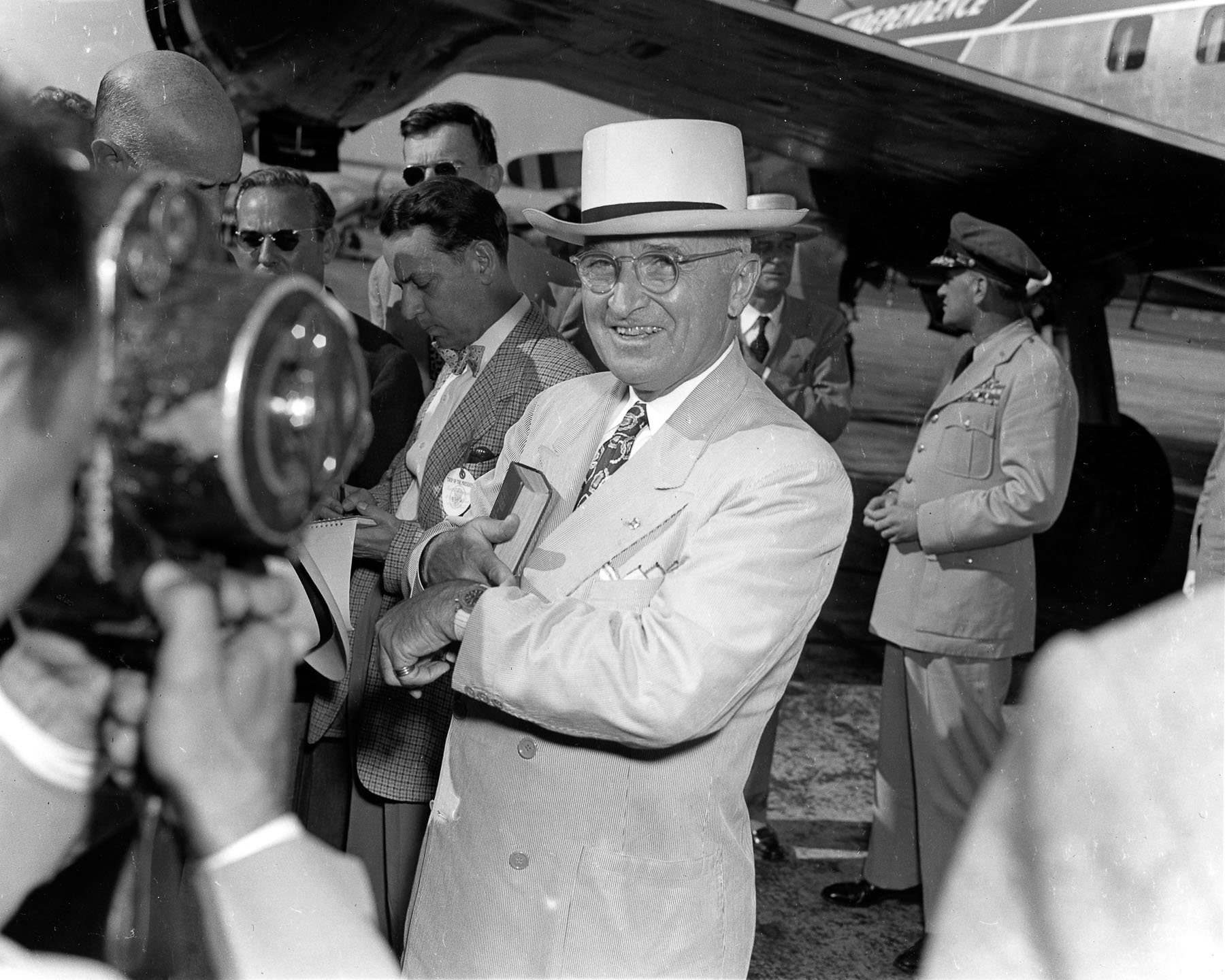
Harry S. Truman in Miami in 1949 — Image: Abbie Rowe, National Park Service, Harry S. Truman Library
Truman’s Flying Officer
Can the story of a watch that changed watchmaking forever get even better? Yes, it can, especially if that watch appears on the wrist of a man who later becomes the president of the United States. Harry S. Truman had been elected to the Senate in 1934 and was serving his first term when, around December 1939, he was gifted a watch. It was nothing other than an early model of the Gallet Flying Officer. Multiple archive pictures show Truman wearing the watch. If that’s not enough, the case back carries Truman’s name and the names of the friends who gave it to him — Victor R. Messall, the secretary to Senator Harry S. Truman (1935–1941), and Paul Nachtman, a prominent Kansas City attorney and personal friend.
In a personal letter to his wife Bess from December 13th, 1939, Truman even mentions the gifted Gallet chronograph: “Vic + Paul Nachman [sic] gave me the most elaborate wrist watch I ever saw for Christmas. You have to be a mathmatician [sic] to tell time by it. But it’s water proof and perfect for artillery use.”
A fake Truman
Beware that there is an incorrect watch with a reprinted dial circulating as Truman’s Gallet Flying Officer. As seen above, the original Gallet Flying Officer is kept safe at the Harry S. Truman Presidential Library & Museum in Truman’s hometown in Independence, Missouri. A recently obtained picture of the watch raises questions about its bezel with very thin and shallow stamping. I guess its original bezel was lost, and at some point, it got a unique replacement. This is another theory that still needs verification.
Serious about serials
The Gallet Flying Officer “Truman” is the earliest example we know of, bearing the serial number 64112. Gallet first advertised the watch in January 1939, and Truman received his watch around December 1939, so examples with lower serial numbers may exist. The last black-dial Flying Officers we saw had 75XXX serials. If you find a black-dial Flying Officer with a serial number over 100,000, I suggest exercising caution and doing a thorough background check on the watch. The same applies if no serial number is stamped on the case back. This can happen if someone wants to remove an engraving, meaning the serial number gets shaved off too. While it’s not easy, checking the case thickness can give you more insights. We have also seen an example with a serial stamped inside the case. Regardless, I highly recommend doing proper due diligence and talking with experienced collectors when spending more than €10,000 on a watch.
The movement
Early Gallet Flying Officers, like other Gallet “Clamshell” watches, housed the Venus 150 movement. If we compare it to later Gallet Multichron models, which predominantly used Excelsior Park calibers, the movement construction and the user experience are different. Therefore, your Gallet collection isn’t complete enough with only one of these movements.
Last thoughts
I am excited about Breitling having recently acquired Gallet. Most Gallet enthusiasts believe it will ignite more interest in the brand and cause more people to research individual models. I expect Gallet to reinterpret the Flying Officer in the coming years, and I am curious what the brand will add to it regarding size, design, or function. For now, I am happy with the original Flying Officer. Happy hunting!

